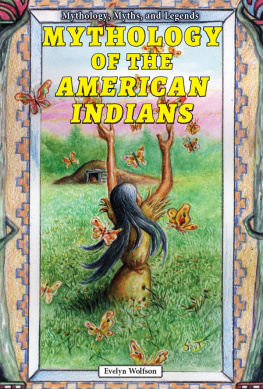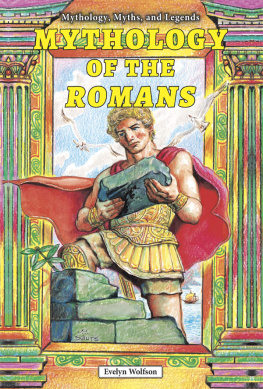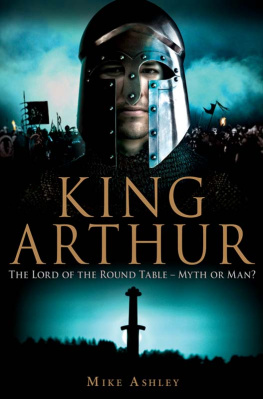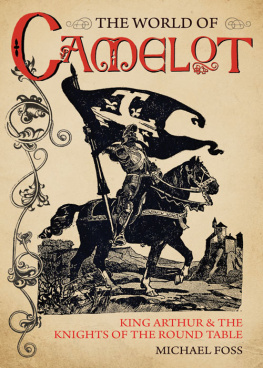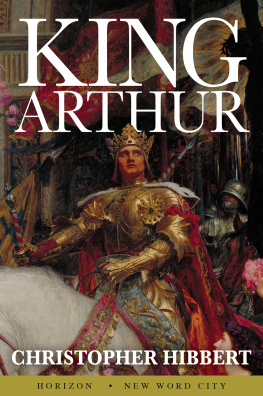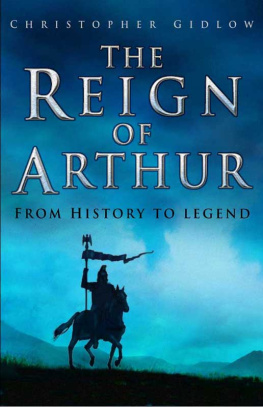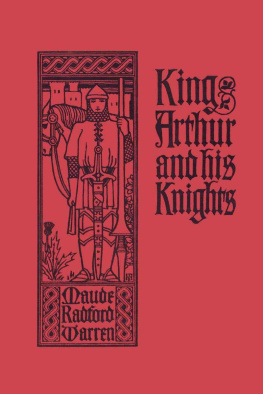A Legendary Leader
During the Dark Ages, Britain was without a king and the country was divided. Death and destruction reigned over the land as power-hungry overlords armed themselves and fought against their fellow countrymen. But out of those dark and violent centuries a legendary leader arose; King Arthur became one of the most famous figures in British literature.
In Mythology of King Arthur and His Knights, Evelyn Wolfson examines both legend and historical fact surrounding King Arthur and the Dark Ages in the British Isles. Expert commentary and question-and-answer sections supplement each story for a more complete understanding of the legends of King Arthur.
...a thorough introduction to the many stories about the king...
VOYA
This is an excellent knight in mythology book...
Infolink Book Evaluation Program
About the Author
Evelyn Wolfson has traveled extensively and written articles on the subject of archaeology. Her books have won many literary awards, and are recommended by the Library of Congress.
About the Illustrator
William Sauts Bock has illustrated many books, and his illustrations was honored by the American Institute of Graphic Arts.

During the Dark Ages, Britain was without a king and the country was divided. Death and destruction reigned over the land as power-hungry overlords armed themselves and fought against their fellow countrymen. Then, out of those dark and violent centuries, a legendary king arose and the people rejoiced. King Arthur brought peace and justice to Britain.
Historians are undecided about whether or not there was ever a hero named Arthur. If there had been, he would have lived in an Iron Age hill fort sometime during the fifth or sixth century and he would have been a soldier, not a king.
But medieval audiences imagined that Arthur, his gallant knights, and Camelot existed in their own time period, not seven or eight centuries earlier. The legendary King Arthur who reigned somewhere in between the twelfth and the fifteenth centuries became one of the most famous figures in British literature. Audiences imagined that King Arthur, his knights, and their ladies lived in a picturesque castle at Camelot, where they enjoyed sumptuous banquets, drank fine wine, dressed in elegant clothing, and enjoyed the fellowship of the Knights of the Round Table. This imaginary Camelot consisted of a castle surrounded by a town. It may have been located at Winchester, Caerleon, Carlisle, or Cardigan.
Barbarian invaders burned most of Englands Roman records and almost nothing was recorded between the end of Roman rule in A.D. 410 and the appearance of Saxon kingdoms in A.D. 600the time during which Arthur would have been king. Thus, most historical data have been reconstructed with a lot of guesswork. From the bits and pieces of materials that have survived, it has been determined that a British soldier named Arthur fought in a series of wars against nomadic invaders who assailed Britain after Rome withdrew her legions. Arthurs greatest victory was believed to have been the Battle of Badon Hill in southern England and was perhaps fought in Dorset.
Thereafter, Britons enjoyed over a half-century of peace under Arthurs leadership. To maintain the peace, however, Arthur had to fight a number of battles against rebellious British kings.
Where the scanty bits of historical material left off, medieval storytellers began to create the King Arthur we know today: a great legendary hero with a plan for a new society. One of Arthurs strategies for maintaining peace was to allow defeated kings to retain their titles and dominance over their lands after they had sworn allegiance to him. Defeated kings were also invited to join Arthurs court at Camelot. King Pellinore, King Urien, and other kings who served Arthur at Camelot also kept their titles and they appear in many of the Arthurian legends. King Lot of Orkney, who married Arthurs half-sister Morgause, stayed in northern Britain after his defeat, but his four sons (Gawain, Agravaine, Gaheris, and Gareth) joined Arthur at Camelot.
Another strategy attributed to Arthurs peace plan was the ideal of the Round Table. The Round Table symbolized Arthurs fellowship of knights and granted equal status to every knight who sat around the table. Arthur established a code of behavior for his knights that would exemplify proper conduct for all men everywhere. Knights of the Round Table would be expected to practice chivalrous behavior, meaning that they would defend people who were being cruelly treated (especially women), be virtuous, and never fail in their oath to the king.
The round table itself was a huge wooden circle that was surrounded by 150 tall chairs. Like place cards on a contemporary dining table, the backs of the chairs were inscribed with the names of each knight in gold letters: Sir Lancelot, Sir Gawain, Sir Bors, Sir Balyn, Sir Kay, Sir Launfal, Sir Agravaine, Sir Galahad, Sir Gaheris, Sir Gareth, Sir Percival, Sir Tristan, and on and on around the table. When a new knight joined the Round Table, his name magically appeared on the back of a chair. And when a knight died, his name magically disappeared from the chair. One chair, inscribed on the back with the words Siege Perilous, remained empty for many years. (Siege is the French word for seat.) It was reserved for the knight who would become the purest and most honorable knight in the world. But if the Siege Perilous was taken by a less deserving knight, it would go up in flames.
The Roman conquest of Britain occupied most of the first century A.D., beginning in the south and eventually including all of Britain up to a line between Carlisle and York. Attempts were made to conquer Scotland, but Rome never succeeded in holding the north. Wherever they conquered, the Romans built forts to control the countryside. Their remains can still be seen at Caerleon and elsewhere.
For three centuries, southern Britain enjoyed great prosperity under the paternal rule of the Roman Empire. London and the more prosperous cities of the region became cultural hubs where affluent citizens built fine homes and tried to emulate the elegance of Rome. In the countryside, landowners built villas and became wealthy using the labor of serfs, or slaves.
By the fourth century, however, the Roman Empire had begun to disintegrate and Rome started to withdraw her legions from England. Waiting to attack like wounded boars, the Picts and Scots began to strike from the north. They were joined by Anglos, Saxons, and Jutes (closely akin and often collectively called Saxons), who attacked from across the North Sea.
The Saxons landed along the east coast of Britain from Norfolk to Kent. They sailed up the islands rivers and traveled along Roman roads sacking and burning towns along the way. Many Britons were killed or taken prisoners. Others took their Roman culture, Christian religion, and language and fled to Cornwall, Wales, and Brittany.
Even before the Romans left Britain in the early fifth century, the British had already named a soldier, Constantine, as their own emperor. According to legend, Constantine had three sons: Constans, Aurelius Ambrosius, and Uther Pendragon. After Constantines death, his son Constans became king. But Constans was murdered and his brother Aurelius Ambrosius took his place. Ambrosius successfully drove many of the Saxons out of Britain before he died.
During the same time period, a power-hungry Britain named Vortigern came into power in Wales. Vortigern could not raise an adequate army to fend off invaders from the north, so he invited Saxons to come and settle in Britain and help him to defend the land. The Saxons arrived in droves and, eventually, Vortigern was replaced by the Saxon leader, Hengist.



